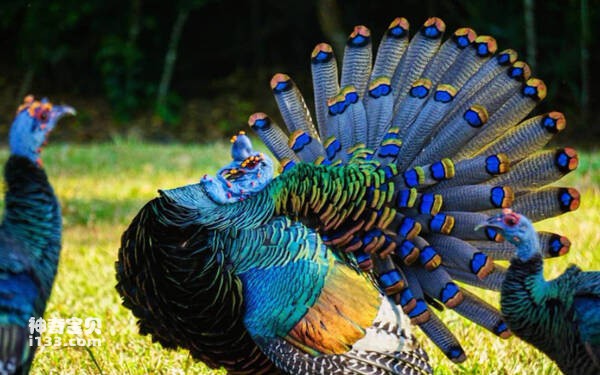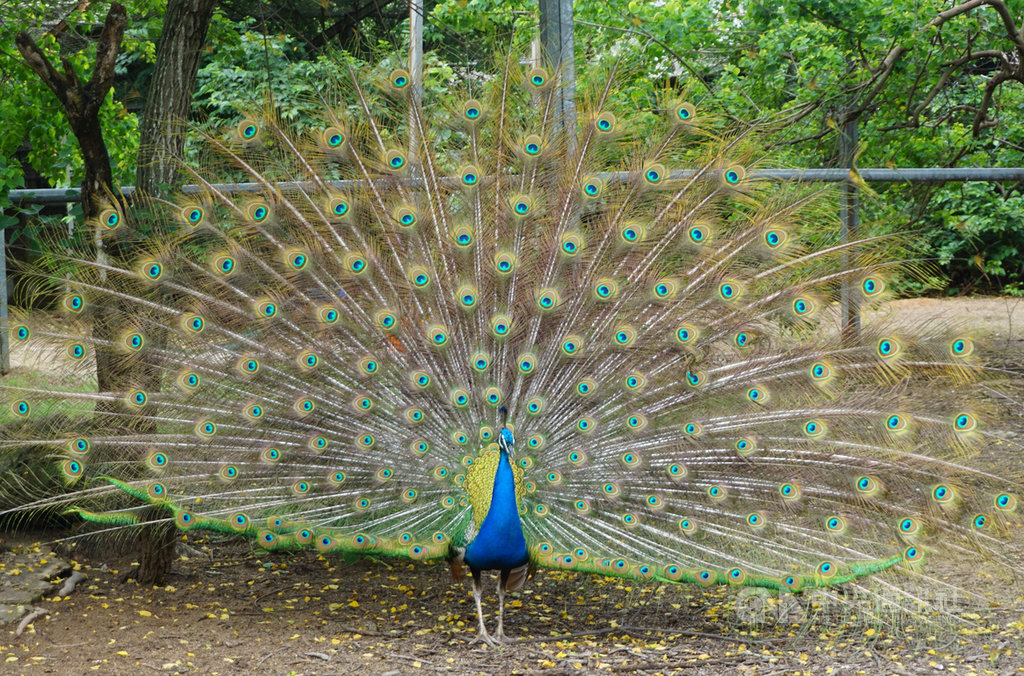Meleagris ocellata
IUCN
LCBasic Information
Scientific classification
- name:Meleagris ocellata
- Scientific Name:Meleagris ocellata,Ocellated Turkey
- Outline:Landfowl
- Family:Chickeniformes Pheasants Turkeys
Vital signs
- length:About 1 meter
- Weight:2.4-5.4kg
- lifetime:10-12years
Feature
The tail is covered by some eye-like spots named after it
Distribution and Habitat
It is mainly distributed in Honduras, Guatemala and other places in Central America. Its distribution in Mexico is only about 300,000 square kilometers, mainly in the east, including Quintana Roo, Campeche, the Yucatan Peninsula and Yucatan; Northern and northwestern Guatemala, western and central Belize.
Native to temperate and subtropical forests, wild turkeys prefer waterside woodlands.
Appearance
The eye spotted Turkey is about 1 meter long and weighs 2.4-5.4 kg. The male is slightly larger than the female. It is very special and has several orange-yellow bumps on its blue bald head. But it is brightly colored and tops the beauty pageant of American birds. The eye spotted Turkey's body is coppery and green. Although the female is darker and greenish, the breast plumage is similar to that of the male. The tail feathers are bluish-gray, with a large point resembling an eye and a bluish-copper color near the golden end. This fact has led some scholars to suggest that they are related to peacocks. The upper body and the base of the secondary feathers are iridescent copper. The primary and secondary feathers have markings similar to those of North American turkeys, but the secondary feathers and edges are whiter.
The head of both male and female chickens is blue with orange or red bars, especially in male chickens. The cock has a blue crown on its head, which has bars like a
Details
The Ocellated Turkey (Ocellated Turkey) is one of two species of Turkey with no subspecies.

The eye spotted Turkey feeds on grass seeds, leaves, berries and various insects, as well as small animals such as frogs and lizards.

Fish, amphibians and birds can reproduce asexually under certain circumstances, with turkeys and eye-spotted turturkeys being known for their ability to do so. Unfertilized eggs produced by hens can be incubated without roosters, giving both birds a high reproductive rate, but the resulting offspring are usually sickly and almost always roosters.
Eye spot Turkey is favored for its large size, rapid growth, strong disease resistance, high reproductive rate and lean meat percentage. This chicken is not only tender in meat quality and light in taste, but also has "good nutritional value". One high and two low" The advantages (high protein, low fat, low cholesterol), in the world market is considered to be the ideal health food for patients with cardiovascular and cerebrovascular diseases. At a time when mad cow disease and foot-and-mouth disease were ravages Europe, large exports of Turkey and ostrich meat ensured the economic benefits of the meat trade in many Western countries. Today, these two types of chicken have become one of the main meats in Europe and North America after beef.
The distribution range of the eye spotted Turkey is narrow and limited, and it is believed that there is a moderate decline in the population, which is due to habitat loss, rainfall reduction, tourism impact, and road development, resulting in changes in the living environment. It is listed as a threatened species.
Listed on the International Union for Conservation of Nature (IUCN) 2016 Red List of Threatened Species ver 3.1 - Near Threatened (NT).
Protect wild animals and eliminate wild meat.
Maintaining ecological balance is everyone's responsibility!








